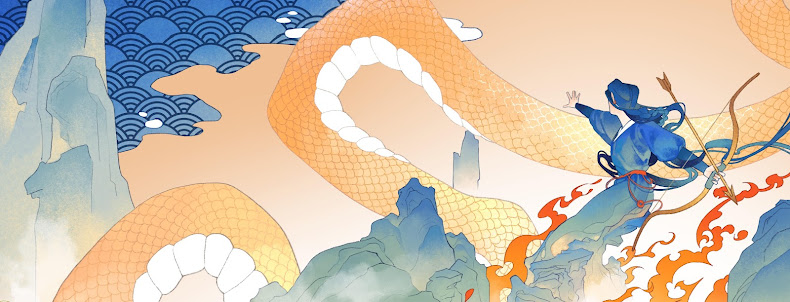I’ve
just finished reading Oliver Lindsay’s “The Lasting Honour: The Fall of Hong
Kong 1941”.
The
book was published in 1978 and was the result of thorough research into wartime
official documents as well as interviews with survivors then living in Britain,
Canada and Hong Kong. The author himself was with the 2nd battalion
of the Winnipeg Grenadiers (from Manitoba, Canada) during the Battle of Hong
Kong in 1941.
If
reading “Not the Slightest Chance: The Defence of Hong Kong 1941” (please refer
to my book review posted on 25th February, 2014) makes one feel like
watching a documentary with grotesque images popping up now and then, then turning the pages of “The Lasting Honour: The Fall of Hong Kong 1941” is like
sitting through a heart-rending war movie that makes one feel anger, despair
and repulse about the inhumanities of wars. I couldn't help shedding a few tears out of respect and reverence for the honorable soldiers who defended Hong Kong to the best they could, even though they were aware that it was a lost cause from the outset.
That
Hong Kong was doomed from the very beginning can be summed up in this passage:-
“The
complete lack of air support, and inadequate sea power, made the defeat of Hong
Kong a foregone conclusion. The defenders, too few in numbers and too thinly
spread, have no knowledge where the weight of the attack is to be anticipated.
So it can only be expected that the assault, with the advantage of surprise,
pressed forward in great strength at a few points, will succeed in breaking
through. This is what the Japanese achieved, and then they pushed forward to
gain possession of the commanding heights which dominate the Island, and from
that moment the campaign was lost.”
Even
as early as April 1938, the War Office in London reconfirmed that the Hong Kong
Garrison should defend Hong Kong, with no reinforcement, for as long as
possible. The Chiefs of Staff in London thought of Hong Kong ‘more as a
strategic liability than an asset’.
Then
when it was finally decided to ask Canada for reinforcement, only two
battalions with little fighting experience or training were sent to Hong Kong.
Upon arrival on 16th November 1941, just three weeks before the Japanese
invasion (which began in the early hours of 8th December), they had
to hit the ground running, being totally unfamiliar with the battle territory, exhausted
from the long sea voyage, and later weakened by malaria.
Was
any help from the Chinese ever to be forthcoming? The answer seems to lie in
this passage:-
“However
China had her own problems. She was divided not only by the Japanese, but also
by the political struggle between the Nationalists and Communists, which
continued in a desultory manner. In 1937, both had joined in a ‘United Front’
to fight the Japanese. Ostensibly integrated with the Nationalist Army, the
Communists concentrated on winning over the people, and setting up base areas
from which to mount guerilla operations. The Communists were to be accused of
conserving their strength and avoiding decisive engagements while consolidating
political power, and the Nationalists were later to be criticized for corruption
and inefficiency.”
It
was bad enough that the Nationalist leader Chiang Kai-shek’s empty promises of
help raised false hopes for those desperate folks in Hong Kong. But more devastating
were the subversive sabotage activities by Communists who had infiltrated into
the Colony (referred to as “fifth columnists” in the book), who looted,
murdered and in every way added to the already harrowing ordeal that the Hong
Kong population were subjected to.
Barbarism
is an understatement when it comes to the unspeakable wicked acts by the
Japanese during the war. The late Dr. Li Shu-fan (late founder of the Hong Kong
Sanatorium and Hospital) had estimated the number of rapes committed during the
battle of Hong Kong to be over 10,000. Cold-blooded murders of allied soldiers (in
some cases even when a white flag was raised) by the Japanese were especially
appalling at the Shaukiwan Silesian Mission Medical Post (where captured
prisoners were bayoneted to death from the back) and at the St. Stephen’s
College Hospital in Stanley (where many wounded soldiers lying in bed were
bayoneted to death, where two soldiers were brutally mutilated and murdered and where several
nurses were raped and murdered and still others raped). Civilian deaths during
the battle were estimated at over 4,000 (Banham: Not the Slightest Chance).
For
the Hong Kong folks, the 18-day battle was only the beginning, horrible though
it was, of a protracted period (lasting three years and eight months) of great trepidation,
starvation, homelessness and utter destitution under the merciless rule of the
Japanese. By May 1945, one million Hong Kong Chinese had left the Colony for
the Mainland, leaving only 650,000 behind.
This
particular part of Hong Kong’s history is probably unknown or unfamiliar to many
of Hong Kong’s young and not-so-young generations. To them, and others who
might have an interest in the subject, I would highly recommend Banham’s and
Lindsay’s books.

2 comments:
May I render a correction to the information on the author Oliver Lindsay. He was indeed a military historian and he served in Hong Kong from 1975 as Second in Command of 2nd Battalion Grenadier Guards.
Hi All;
The Japanese have so much to answer for it is unbelievable....
GC.
Post a Comment